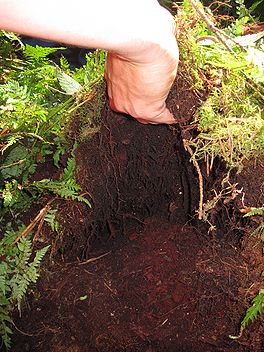LFS:SoilWeb/Soil Biology/Nutrient Cycles
| SoilWeb Learning Resource | |
|---|---|

| |
| Land and Food Systems | |
| Welcome to the wiki for SoilWeb200. The SoilWeb200 learning resource provides students with text, graphical and interactive web-based information to assist them in learning the connections among a large number of concepts and to relate them to various soil management issues as presented in the course APBI 200 - Introduction to Soil Science. | |
| Associated Pages | |
Out of 92 naturally occurring chemical elements only 17 have been identified as essential elements (or nutrients), without which plants cannot grow and complete their life cycles. Elements essential for plant growth include: C, H, O, N, P, K, S, Ca, Mg (so-called macronutrients, used by plants in relatively large amounts), and Fe, Mn, B, Zn, Cu, Cl, Mo, Ni (so-called micronutrients, used by plants in small amounts).
Carbon and oxygen are absorbed from the air, while other nutrients are absorbed (as ions) from the soil. Green plants obtain their carbohydrate supply from the carbon dioxide in the air by the process of photosynthesis.
For an element to be considered essential for plant growth, it needs to fulfill the following criteria:
- In its absence the plant is unable to complete a normal life cycle
- Deficiency of an element is specific to that element and can be prevented or corrected only by supplying the element in question
- The element is part of some essential plant constituent or metabolite.
This is in accordance with Liebig's law of the minimum.
These essential nutrients play various roles in the structure and metabolism of plants. They are continuously cycled through the atmosphere-soil-plant system according to specific transformation and transport processes. Some of these processes occur in soils and make elements available to plant roots and soil organisms.
This section will describe the cycles of five of these nutrients: carbon (C), nitrogen (N), sulfur (S), phosphorus (P) and potassium (K).